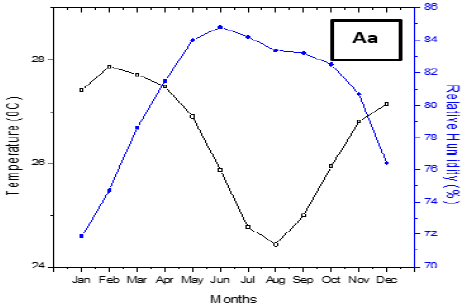Modeling and Forecasting Selected Meteorological Parameters for the Environmental Awareness in Sub-Sahel West Africa Stations
Keywords:
Meteorological Parameters, ARIMA models, ACF, PACF, ForecastAbstract
The monthly air temperature, rainfall, air pressure, and wind speed direction for the environmental time series recorded between January 1, 1980 and December 31, 2020 in six African stations from different climatic zones were modeled and forecasted. In the forecasting, Augmented Dickey Fuller test, ARIMA models, Auto correlation Function (ACF) and Partial Autocorrelation Function (PACF) were used. Result showed that in most of the fitted models, the Moving Average terms both seasonal and non- seasonal were also significant (p<0.05) indicating that the previous day value of the stochastic term also had a significant effect on the present value of meteorological parameters in the environment. It was observed that in all the fitted models except for wind direction in Conakry and rainfall in Abidjan have all their Autoregressive term of order 1 significant (p<0.05) which implies that previous day value of these meteorological parameter had a significant effect on the present day value of the parameters. Therefore, the forecast model indicates that maximum temperature are expected in February, March, April, and June while minimum temperatures in January, August, December. Although, the selected models cannot forecast the precise air temperature, this can also provide information that can be of help to create tactics for appropriate preparation of farming which can be used as tools for effective environmental preparation and policymaking.

Published
How to Cite
Issue
Section
Copyright (c) 2022 F. O. Aweda, J. A. Akinpelu, T. K. Samson, M. Sanni, B. S. Olatinwo

This work is licensed under a Creative Commons Attribution 4.0 International License.





